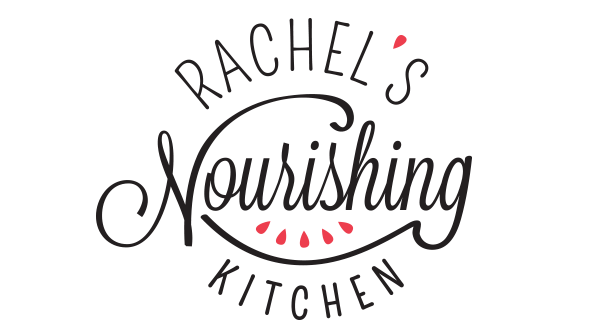This is the second part in a two-part series. Did you miss the first post? To learn about the start, the art and the heart of HEX Ferments, click here.
I had the privilege of interviewing Meaghan Carpenter, one of the founders and owners of HEX Ferments, a fermented food and drink company located in Baltimore. I was drawn to her story because of how her company embodies the core of my food philosophy – to connect with our food, where it comes from and how it makes us feel; to savor our food, prioritizing quality and taking time to enjoy it; and to nourish our bodies with vibrant, life-giving food.
The Difference
So, what makes HEX Ferments different than other fermented foods and drink companies? Meaghan had a lot to say about that and was passionate about the quality of what they create.
We source and ferment for peak flavor. […] We work with layering flavor. Our staff are all trained in the culinary field. We’ve hired people that know how to work with flavor. We don’t use a lot of dried spices. We use a lot of fresh herbs and spices and we source from local farms for about 90% of our produce. That helps us to get the foods that are the freshest and at the peak of their flavor and nutritional profile.
The health benefits of HEX’s products vary greatly from most products on the market, especially in the case of something like pickles. Most pickles on the market are made with vinegar, which acts as a preservative to make them more shelf stable. It’s used as an instant acidifier.
 Unfortunately, most vinegars are denatured or killed, so the nutritional benefits of fermented food are lost; there’s no probiotic component to vinegar pickles. The way HEX produces their products preserves the nutritional integrity and gives us the host of benefits we expect.
Unfortunately, most vinegars are denatured or killed, so the nutritional benefits of fermented food are lost; there’s no probiotic component to vinegar pickles. The way HEX produces their products preserves the nutritional integrity and gives us the host of benefits we expect.
HEX naturally ferments their products through the process of lactic acid fermentation, which creates the beneficial microbes that characterize pickles, sauerkraut and kimchi. The next time you’re in the market for a jar of pickles or sauerkraut, make sure you read the label. You want it to be a “living food” with live cultures, no heat and no vinegar.
Not only does HEX prioritize using high quality ingredients and best in class fermentation practices, but they are also particular about the vessels in which they make their products. Unlike most large companies, they don’t use plastic barrels lined with plastic to ferment. When you’re creating a food that acidifies itself, you’re creating a lot of microbes that are really powerful that can eat away at plastic. Because of that concern, the team at HEX ferments in stainless steel, which also helps to keep their products tasting the same as well. That is considered the gold standard for how to ferment.
What I was surprised to learn next gave me another reason to take pride in having HEX Ferments as one of our own. They are the only fermented food company in the U.S. that makes and sells everything at their storefront. This gives their customers a unique experience and the ability to taste and smell everything and talk to the people who have a hand in making the food.
The Flavor
People often come up to the stand and aren’t shy about their feelings toward fermented foods, “I hate sauerkraut.”
Instead of being flustered or offended, Meaghan responds gently, “I’m sorry to hear that. That just means you haven’t had really good sauerkraut. You can learn to like sour.”
If you’re new to fermented foods, it can take a little while to adapt to their naturally sour taste, but Meaghan gave me some suggestions that could help.
- Pickles are a great way to start because most of us are already familiar with them and have tried them before. Try some cucumber pickles or other pickled vegetables.
- Try kombucha. It’s an easy entry point because it often has a bit of sweetness to balance the sour, and people tend to like its fizziness.
- Their carrot confetti made with pickled carrots is a good starter and converted a former sauerkraut hater into a weekly customer.
- Mix and eat things like sauerkraut with food. If you eat salad, instead of adding dressing, take a few tablespoons of the kraut, chop it up, mix it into your salad and add some olive oil.

A few bottles of HEX’s brightly colored kombucha
So, how much sauerkraut should you eat? What amount of kombucha is best to drink?
Start small. Keep in mind it is a living food and you’re introducing billions of bacteria into your system.
Meaghan suggests starting with one tablespoon of kraut or kimchi a day with food (i.e,. chopped up on a salad, as a condiment, mixed in with grains and beans, on a sandwich, etc.) and see how your body reacts. Her stepmother swears by breakfast consisting of an English muffin with peanut butter and HEXs juniper caraway sauerkraut. I can’t say it appealed to me, but Meaghan’s enthusiasm about it might get me to try it!
For kombucha, Meaghan recommends starting with four to six ounces on an empty stomach in the morning. This has helped her and others with chronic constipation.
As with any food, slow down and pay attention to how your body responds and then increase the amount you’re eating or drinking or stay where you are. Over time, it’s likely you will be able to eat more.
The Shop (Where to Find It!)
To learn more about HEX Ferments and their upcoming events and for locations where you can find their products, check out their website at www.HexFerments.com.
Locally, you can find their products at MOMs Organic Market, Whole Foods, Graul’s, and Eddies Market as well as at the Waverly Farmer’s Market in Baltimore on Saturday mornings.
 If you’re in the DC area, swing by Each Peach Yes! Organic Market at Capitol Hill, or the Arlington MOMs Organic Market for a jar of their famous kraut or kimchi. Hex also has a presence at the Silver Spring Farmer’s Market and Bethesda Farmer’s Market on Saturday mornings.
If you’re in the DC area, swing by Each Peach Yes! Organic Market at Capitol Hill, or the Arlington MOMs Organic Market for a jar of their famous kraut or kimchi. Hex also has a presence at the Silver Spring Farmer’s Market and Bethesda Farmer’s Market on Saturday mornings.
If you’d rather skip the trip to the store or market and order online, you can order their products through Washington Green Grocer, Relay Foods, Hungry Harvest, and Hometown Harvest.
The Future
HEX Ferments is experiencing a ton of growth and will be expanding to a larger production space just down the road from Belvedere Square, where their storefront will remain. They will gain over 1,000 square feet of space.

A sneak peek at the new space
They have plans to teach a few workshops in the fall and look forward to introducing more people to the art of fermentation. I’ll be sure to keep you updated about those events through my Facebook page and this blog.
Over the years, Meaghan and Shane have grown to appreciate and embrace all that Baltimore has to offer. They look forward to continuing to build community through HEX Ferments, as they invite us to connect with our food, how it makes us feel and where it comes from; appreciate food as beauty and art; and nourish our bodies with living, healing food that will leave us looking and feeling our best.
Have you tried HEX Ferments products? Do you have a favorite? Feel free to share below!






 It would take two transatlantic trips to the U.K. before Meaghan and Shane would delve more deeply into the art of fermentation. Both she and Shane spent some time separately in Ireland, where Shane worked on organic farms in Wales and saw a different side of fermentation – wines, meads and preserved foods – the side most of us are more familiar with here in the States.
It would take two transatlantic trips to the U.K. before Meaghan and Shane would delve more deeply into the art of fermentation. Both she and Shane spent some time separately in Ireland, where Shane worked on organic farms in Wales and saw a different side of fermentation – wines, meads and preserved foods – the side most of us are more familiar with here in the States. I loved what Meaghan had to say about what happened once they embarked on the journey to come together and explore the art of fermentation:
I loved what Meaghan had to say about what happened once they embarked on the journey to come together and explore the art of fermentation:













